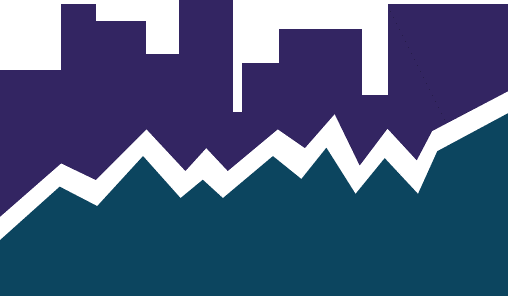The Monday Morning Quarterback
A quick analysis of important economic data released over the last week
By Elliot D. Pollack & Co. | Rose Law Group Reporter
Who is Correct on Fighting Inflation?
Fed Chairman Jay Powell’s newest pledge to continue higher, “restrictive” rate hikes for longer has already drawn a wide range of responses. Critics of Fed policy such as Wharton’s Jeremy Siegel say the Fed is making “one of its worst mistakes” by overtightening into a hard landing, while on the other side, supporters such as former Treasury Secretary Larry Summers argue that the Fed’s credibility and future inflation expectations anchoring are at stake if the Fed takes its pedal off the metal too quickly.
Coming into the year, there was little question that more restrictive monetary policy from the Fed was needed to cool an overheated economy and bring overwhelming demand closer in line with supply.
But some economists believe that leading economic indicators from industry sources across all the major drivers of inflation (housing, labor, fuel, and food) suggest that inflation may have peaked, and there may also be ample economic evidence that the Fed could already be well on its way to slaying the inflation dragon even without continued rate hikes. At least that’s what some economists are now saying. As the Fed generally relies on trailing indicators rather than leading indicators, forward-looking readings suggest perhaps the Fed is at risk of steering into a significant recession if it continues to push for more rate hikes.
On housing, much attention has been focused on August’s CPI 9% annualized housing inflation. But this backward-looking measure may already be outdated. Housing CPI is naturally lagged as it captures all leases, even though most don’t renew in any given month–so it takes time for price decreases in new leases to get fully reflected in CPI readings. This is on top of a survey design flaw that the BLS, the compiler of CPI, uses for housing CPI which mechanically bakes in another few months’ lag on top of that.
Looking forward rather than backward, the key drivers of the run-up in home and rental prices have now broadly reversed. Mortgage rates have now doubled to over 7% from the start of the year while housing demand measured from forward-looking indicators across surveys, mortgage applications, sales volumes, and more are down significantly.
On the opposite side of the above opinion is Larry Summers who is, to say the least, not very upbeat. He believes is we are going to bring down inflation, we need a policy that is more restrictive than the policy contemplated by the markets or the Fed. And the Fed continues to be excessively optimistic. For Summers, the greatest worry is that the Fed won’t have the resolve to raise rates high enough, and that the eventual cure will be far more costly than shouldering what could be a shorter, shallow downtown in the months ahead.
In Summers’ view, underlying inflation, excluding food and energy, is running at 4.0% to 4.5%. To tame inflation requires a real Fed funds rate that is 1.0% to 1.5% higher than the pace of bedrock inflation or 5.0% to 5.5%. That is far above the current Fed funds benchmark midpoint of 3.1% and below the maximum rate of 4.6% that the Open Market Committee is currently forecasting. Summers is calling for an even higher Fed funds rate which likely would push unemployment above 5%. The alternative is that inflation will keep bubbling in the economy for years.
The next few months may give some insight into who may be right and who may be wrong in addressing inflation. Hopefully we start to see some real progress in inflation rates slowing as Americans feel the pinch and start to spend less money. But whether you believe the Fed is on the right track or needs to be more aggressive, inflation will be with us for a while.
U.S. Snapshot:
- The Bureau of Economic Analysis released revisions from 2017 onwards. The revised figures confirmed the decline in the first two quarters of 2022 and remained as previously published, with the first quarter dropping by 1.6% and the second quarter declining by 0.6%. There were positive revisions to both 2020 and 2021. The COVID recession of 2020 saw the economy decline by 2.8%, down from the -3.4% previous estimate. 2021 saw a stronger recovery as GDP increased by 5.9%, up from 5.7%.
- Personal income increased 0.3% for the month of August. Personal Consumption Expenditures (two-thirds of the economy) increased by 0.4% after a decline of 0.2% in July. Consumer spending continues to increase, but the savings rate has declined and was 3.5% in August, down from 9.5% a year ago. This indicates consumers were forced to use their savings as prices increased.
- Consumer confidence increased for the second month in a row in September. Jobs and declining gas prices were the primary boosts in confidence for the month. September’s level stands at 108 up 4.2% for the month and down 1.6% from a year ago. Purchasing intentions were mixed, as financed reliant purchases such as homes are very interest dependent. We have seen a slowdown in home purchases as mortgage rates have increased.
- The number of new home sales unexpectedly increased in June, according to the U.S. Census Bureau. The seasonally adjusted annual rate (SAAR) jumped 28.8% for the month and was only down 0.1% from a year ago. August’s SAAR of 685,000 was well above the consensus estimate of 500,000.
Arizona Snapshot:
- Lodging activity was positive in Arizona. August’s occupancy was below 60% but was up 4% from a year ago. Demand was up 3.8% with supply dropping 0.2% during the same time period. Year-to-date, occupancy was up 9.4% for the year.
- The Case-Schiller Home Price Index confirmed the price slowdown/decline across the U.S. in July. The national index declined 0.3% with the composite-20 falling 0.8%. Greater Phoenix declined 0.1% for the month. Year-over-year, prices in Greater Phoenix continued to grow, but the rate has slowed significantly. July’s index grew at 22.4% down from 26.6% a month ago and from 32.4% a year ago. The importance of the Case-Shiller index is that it compares repeat sales and judges the price increase/drop of the same property, making it better measurement of price changes since it is less susceptible to the mix of homes sold than average and median sales price.












